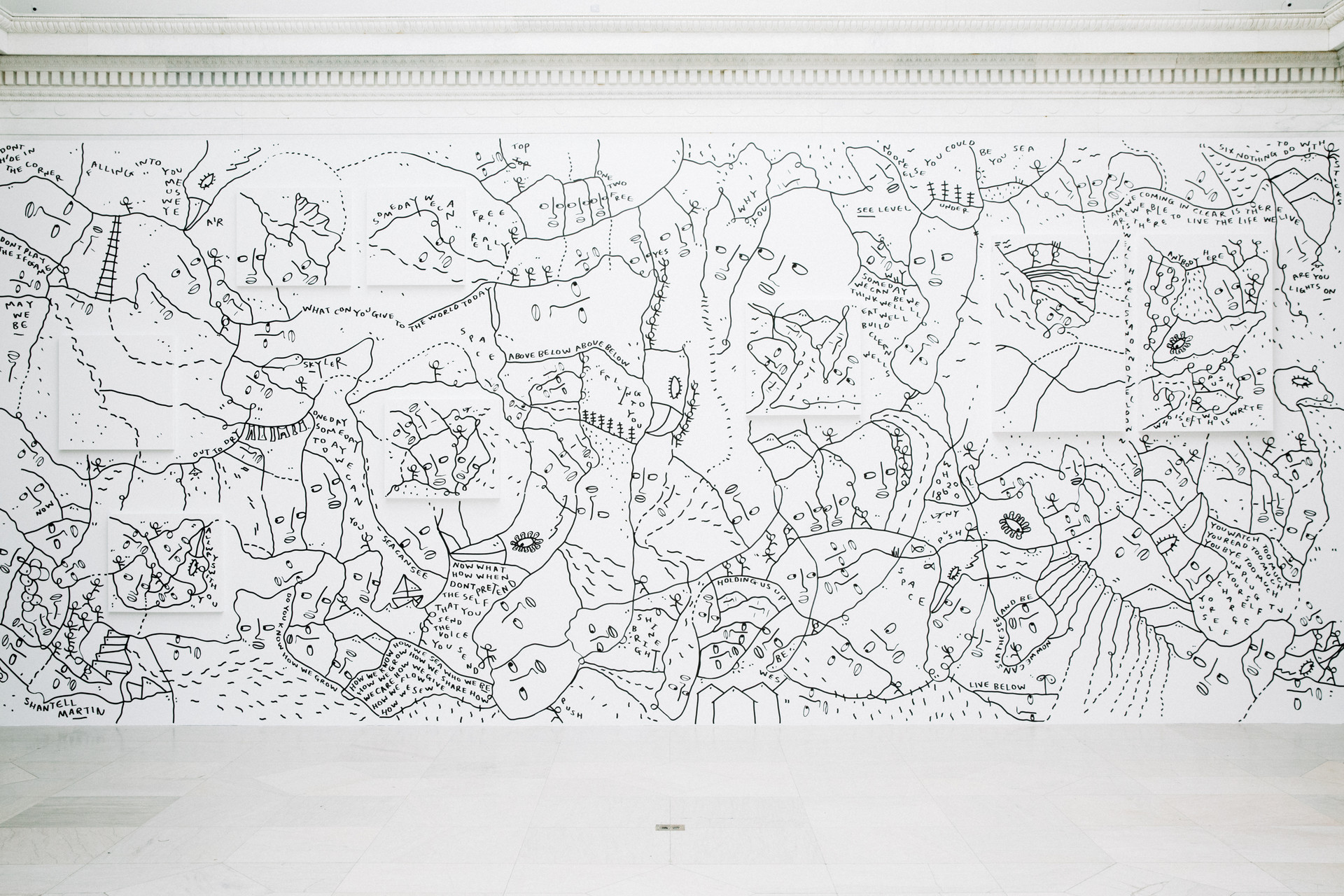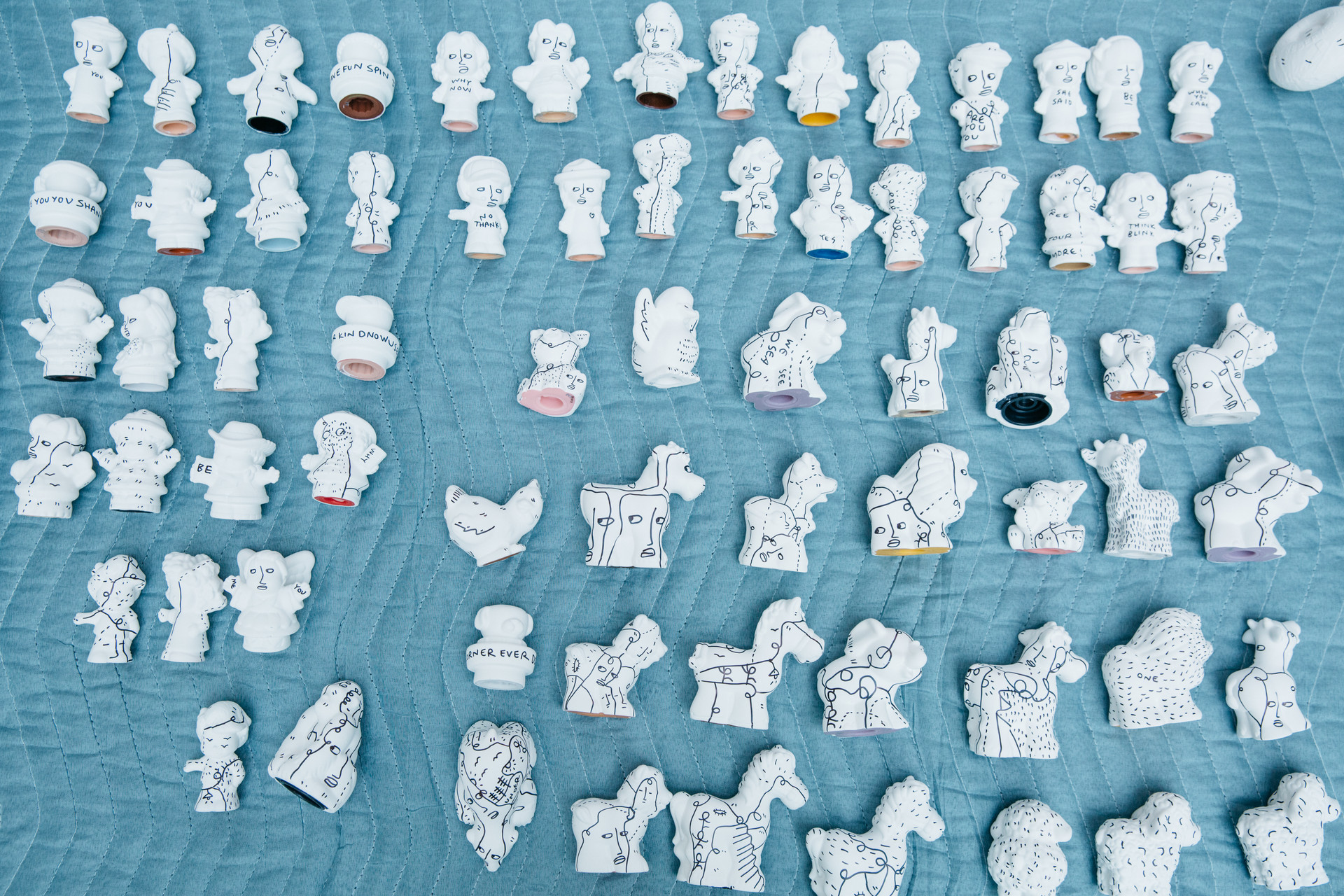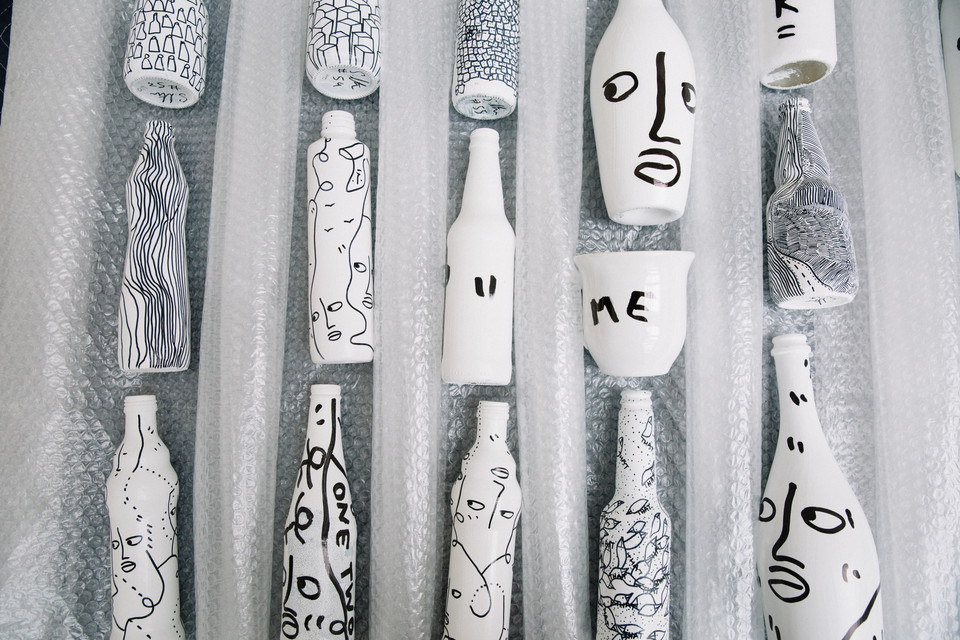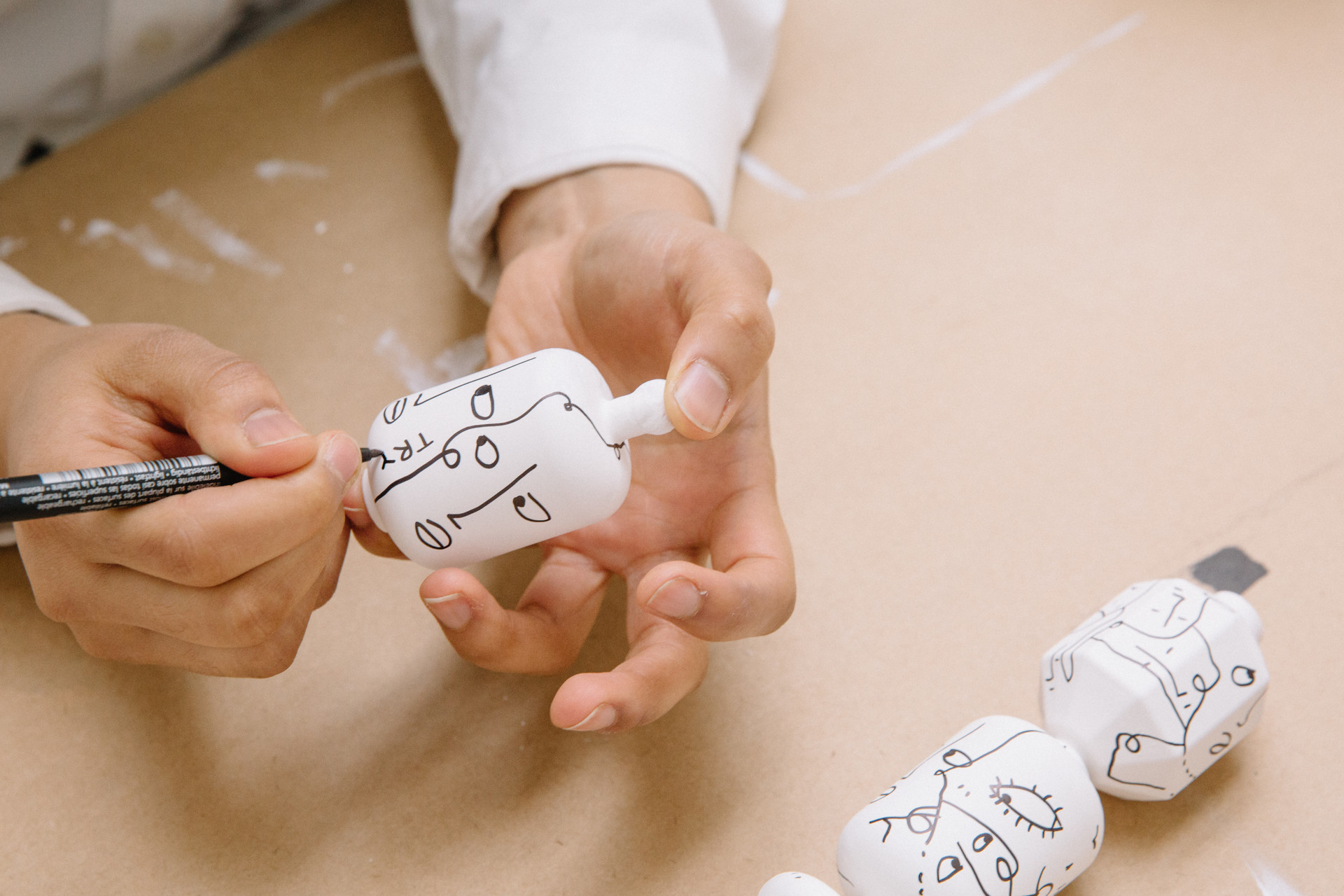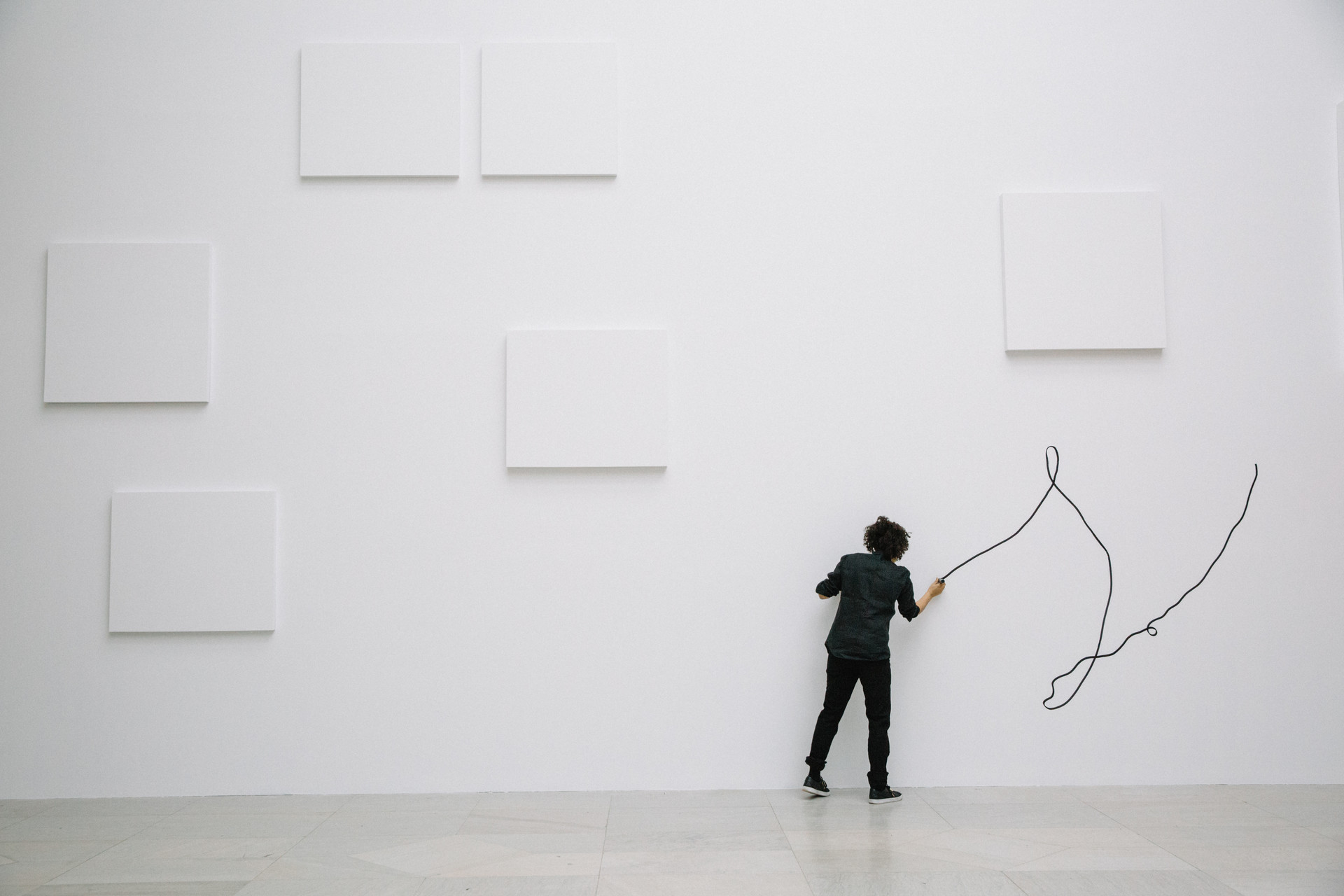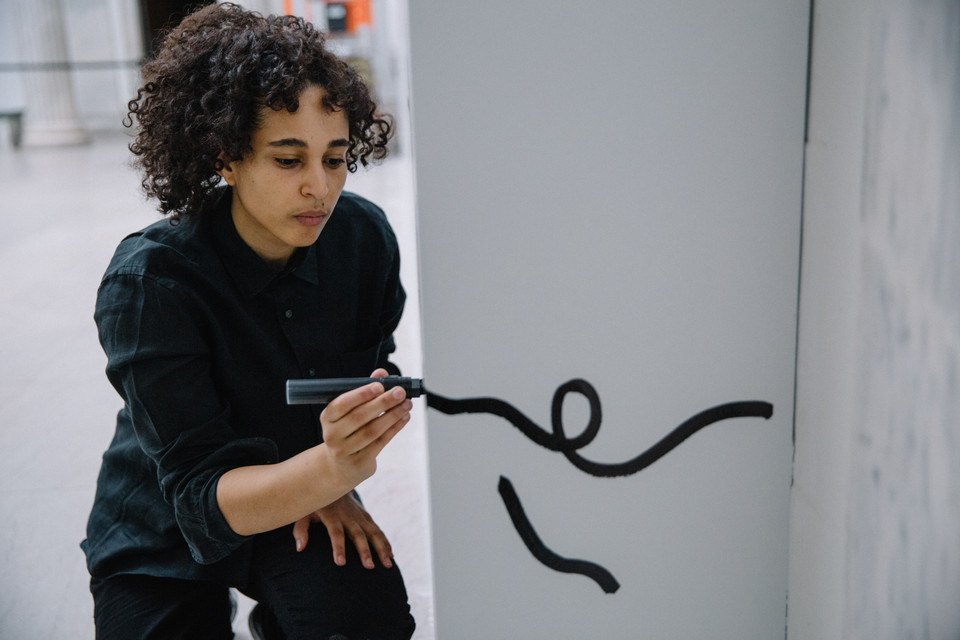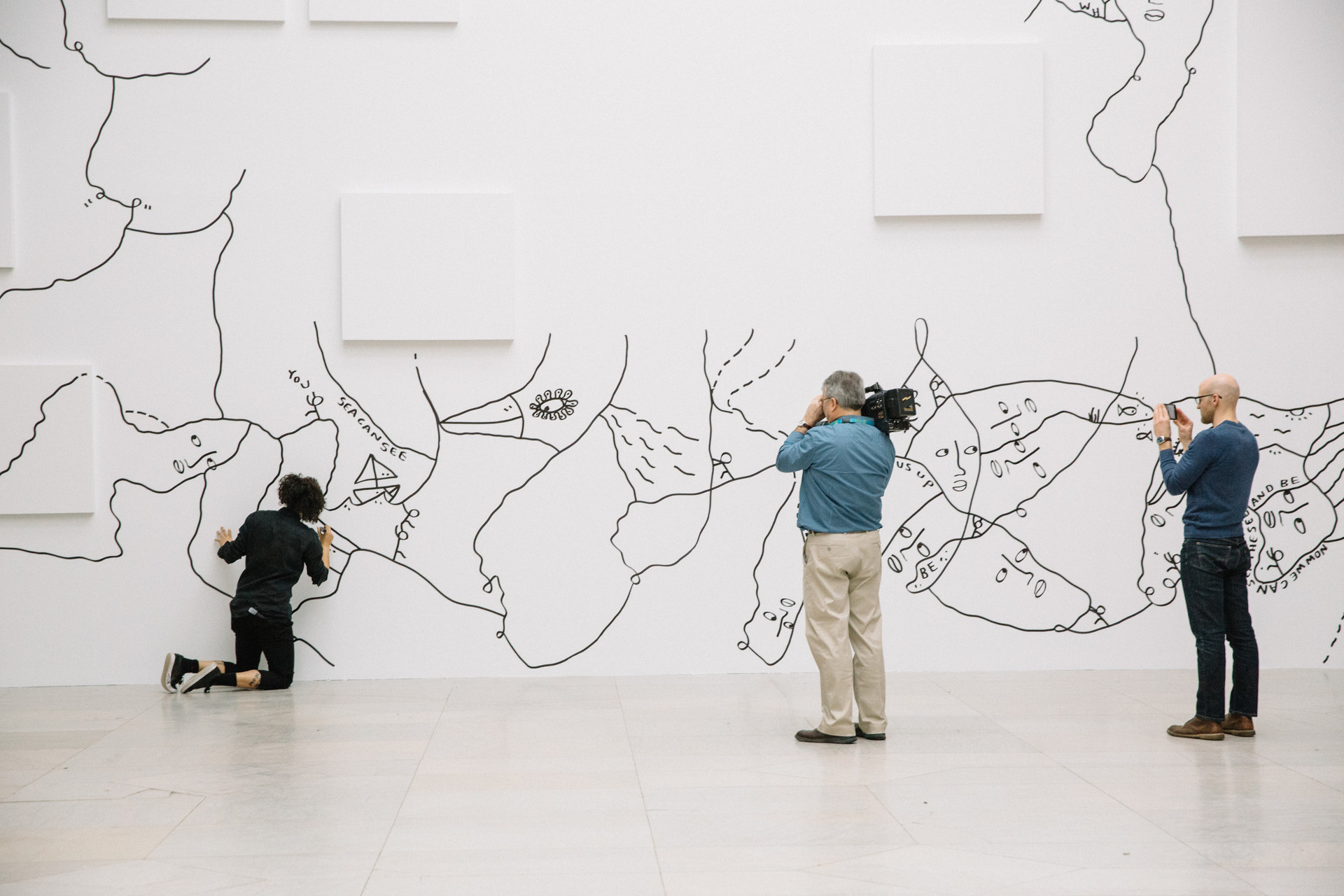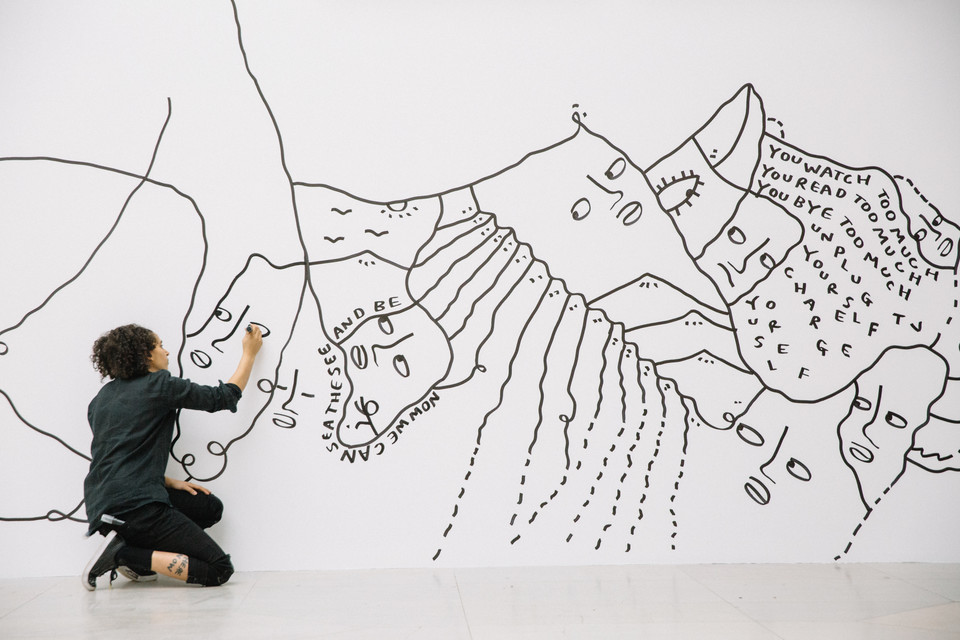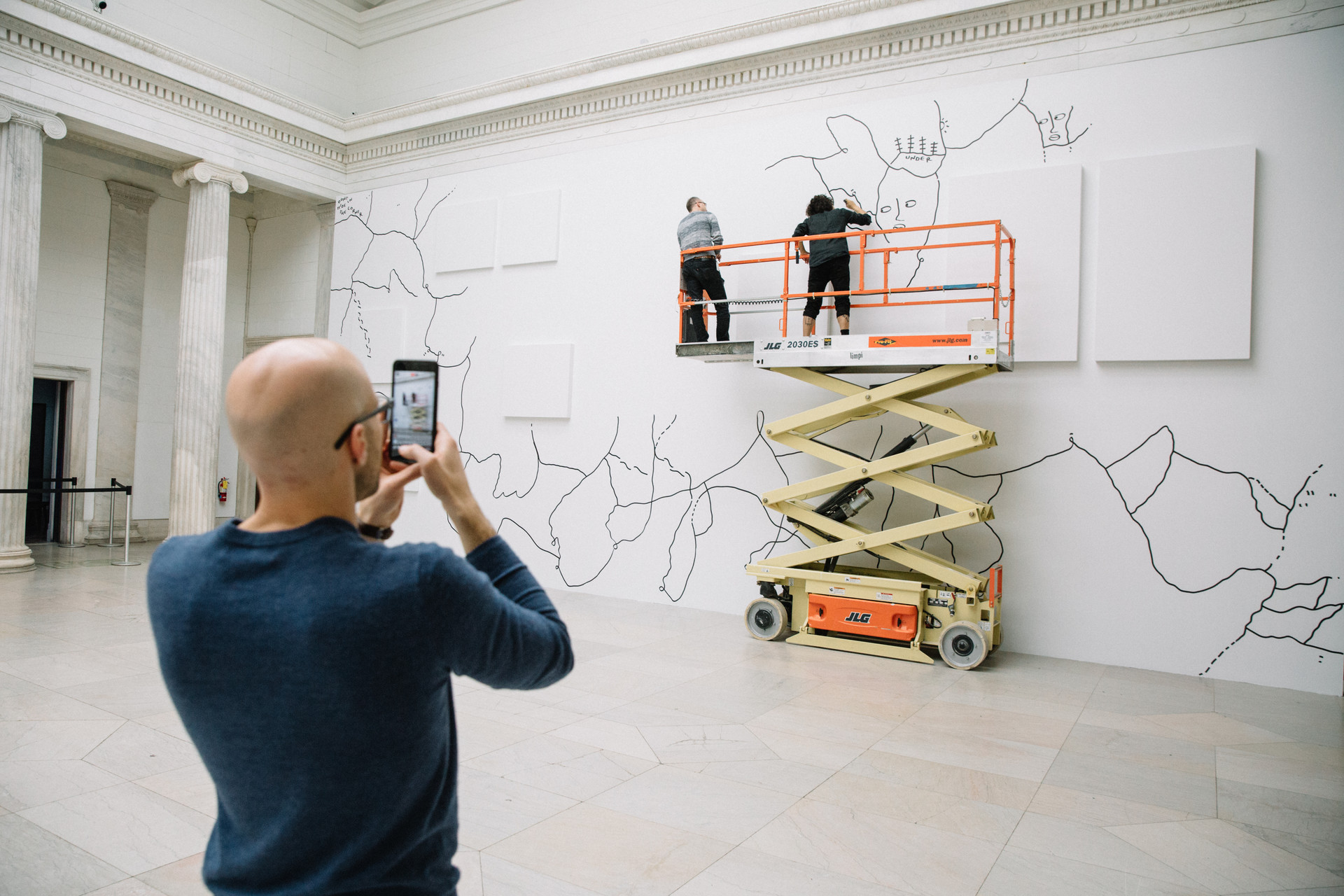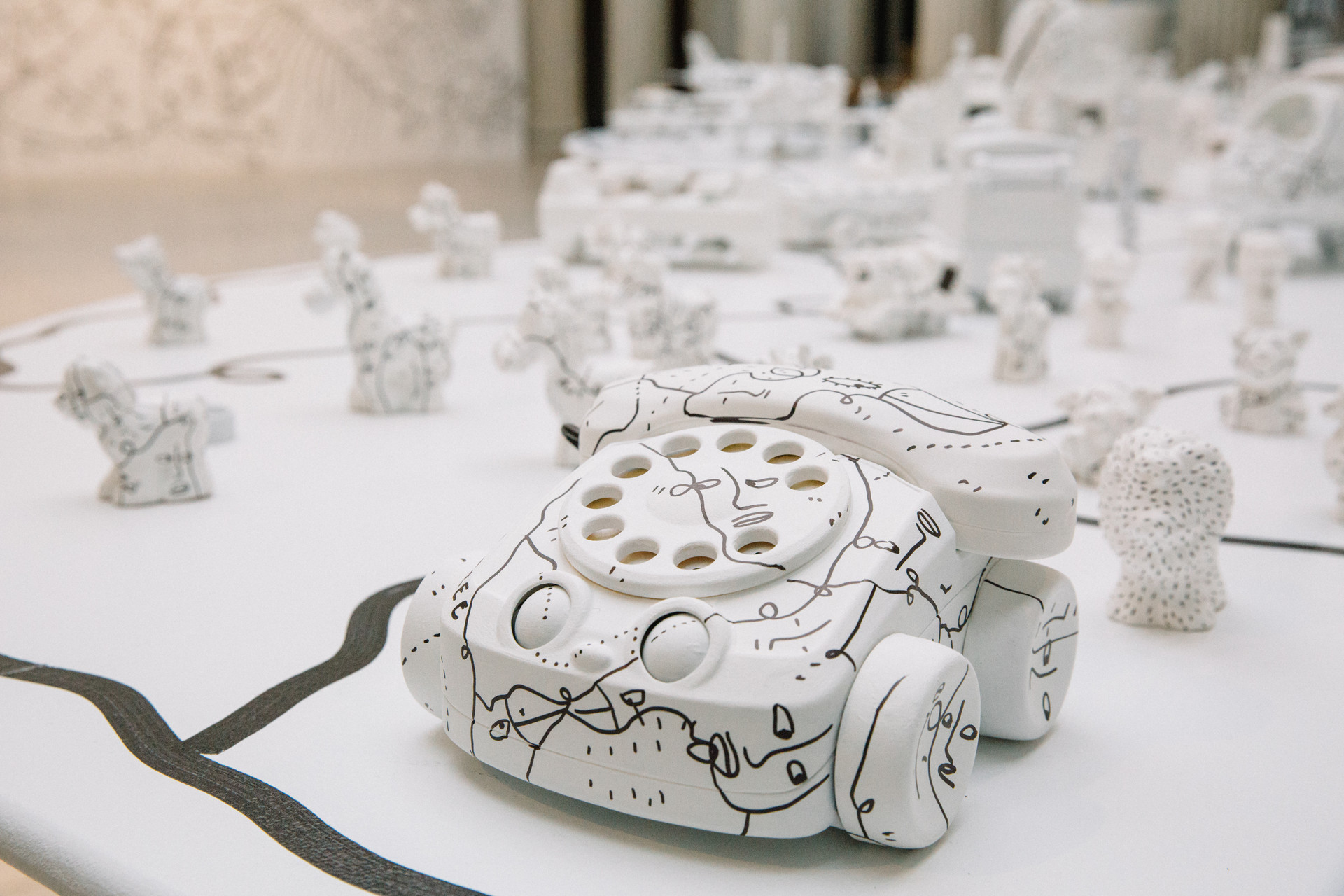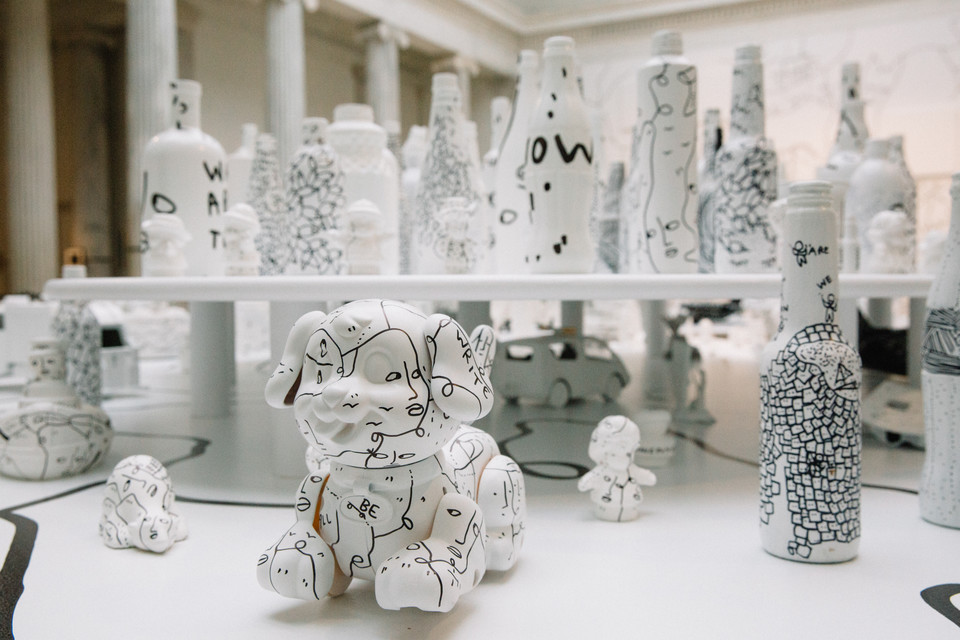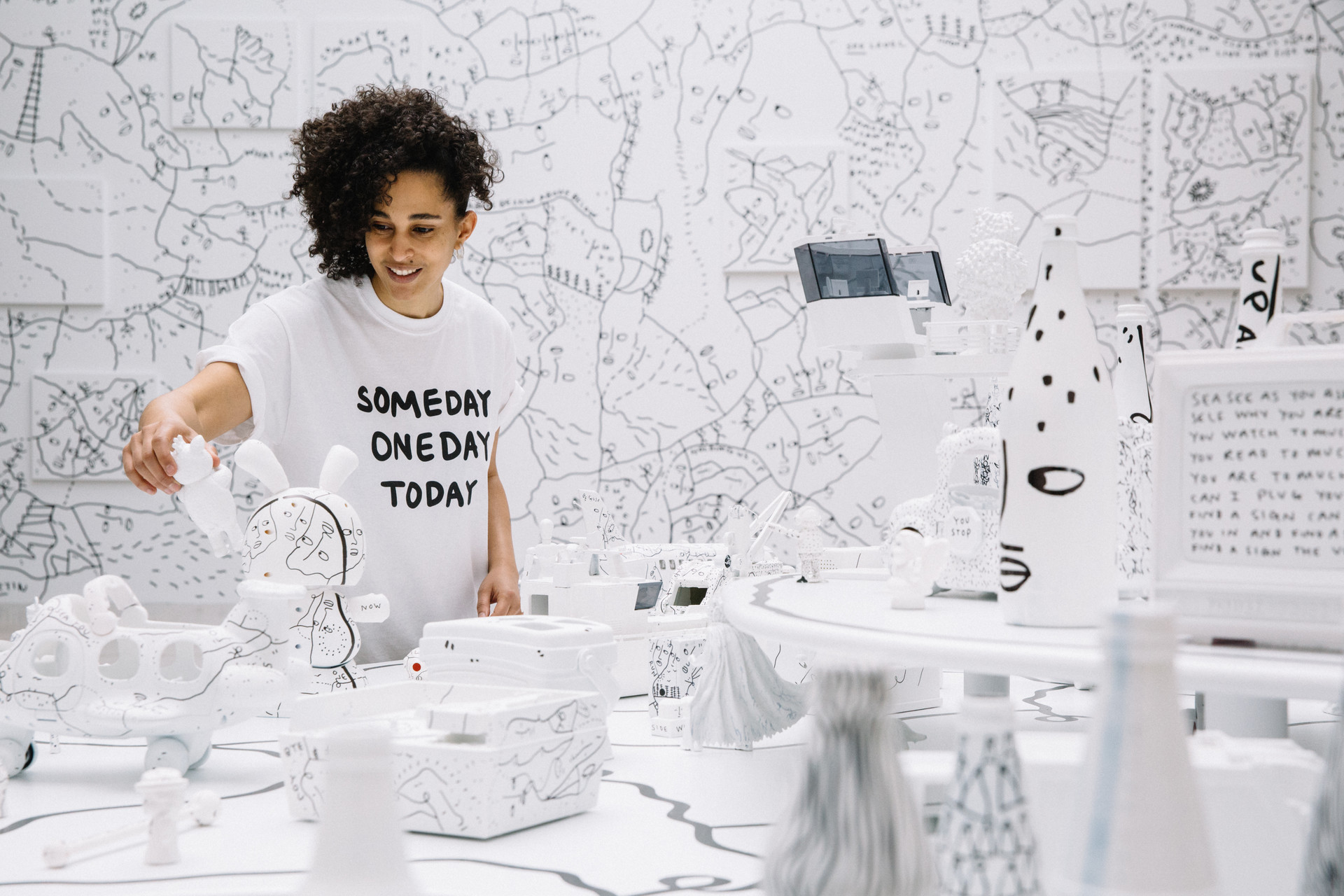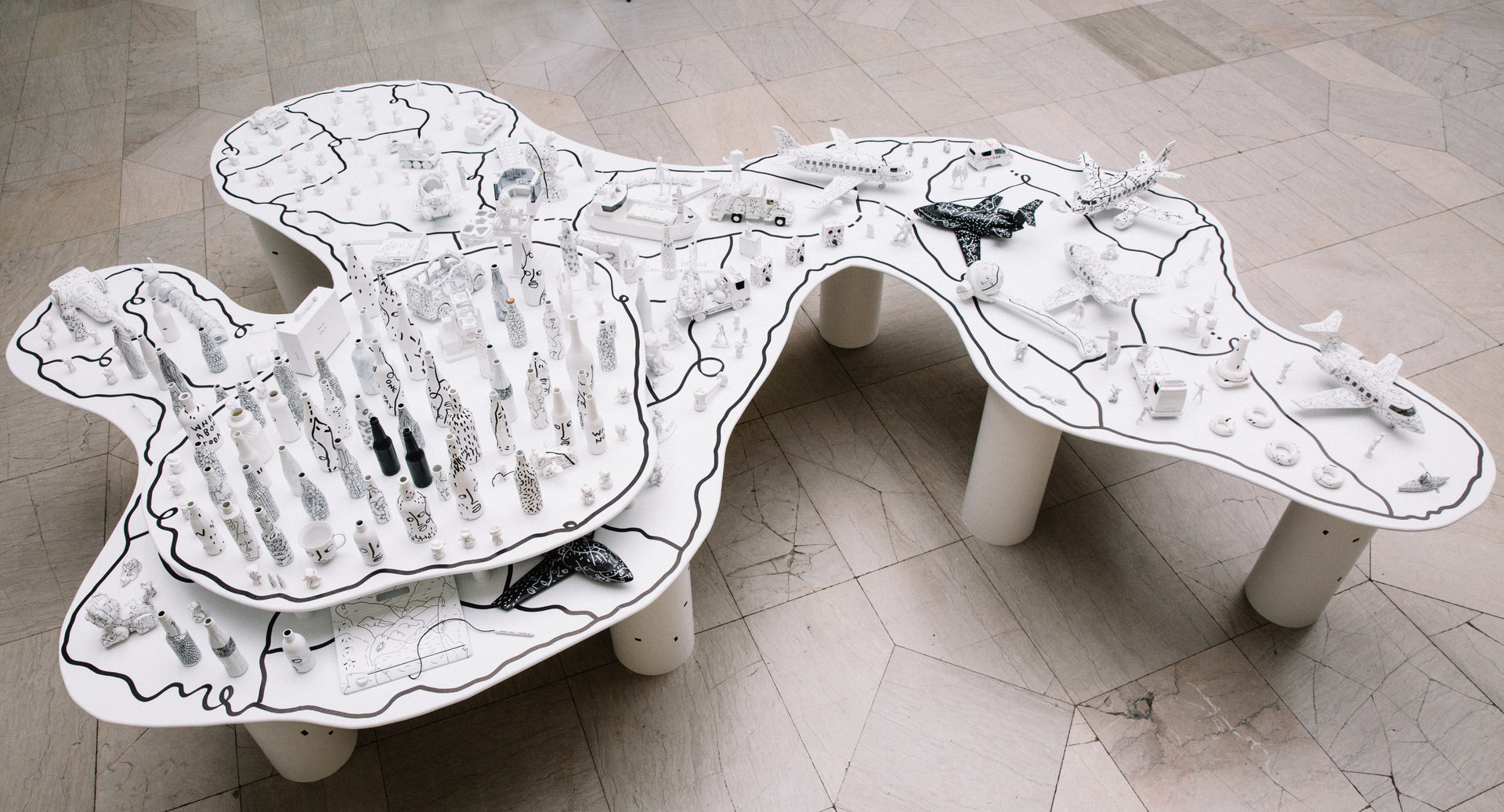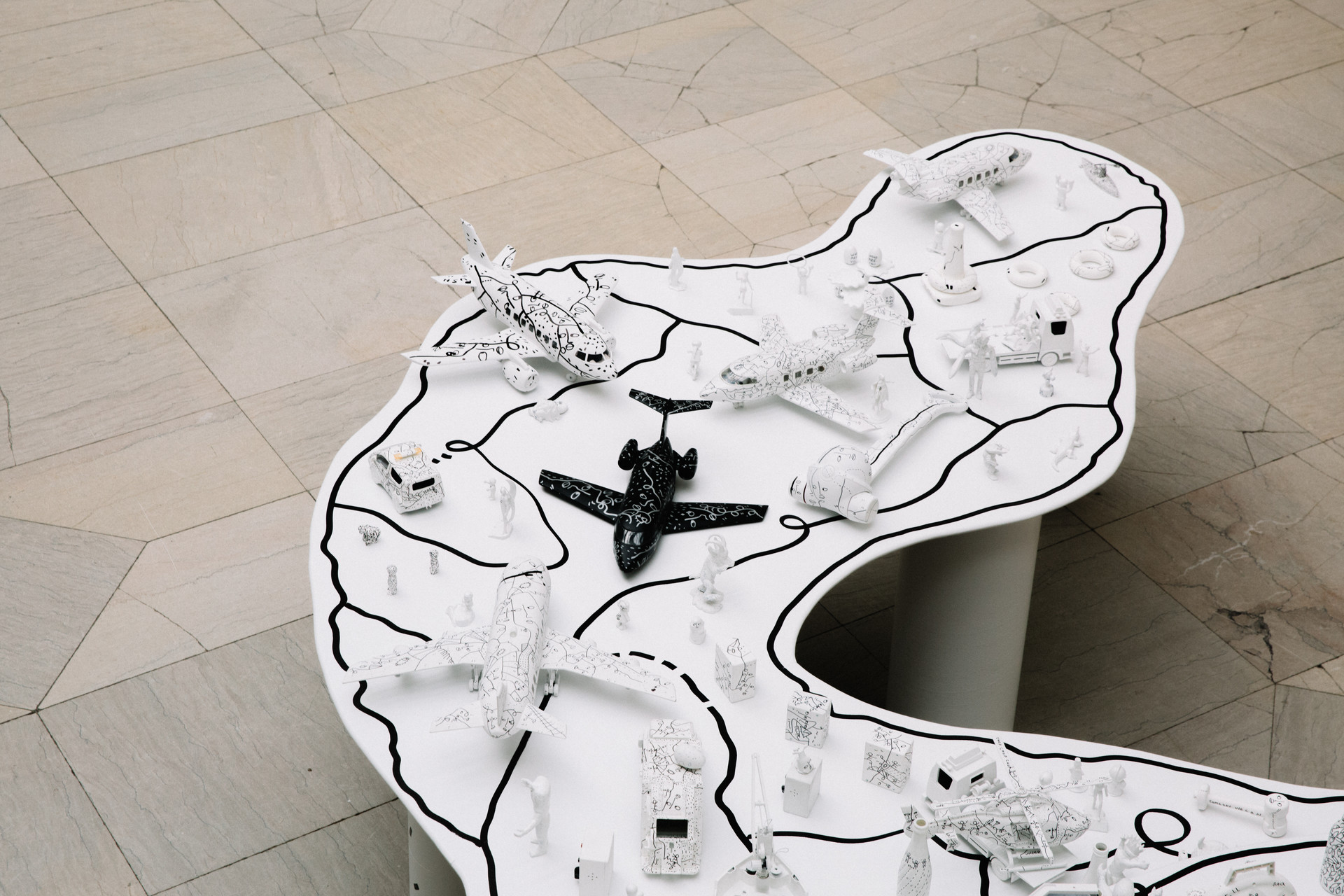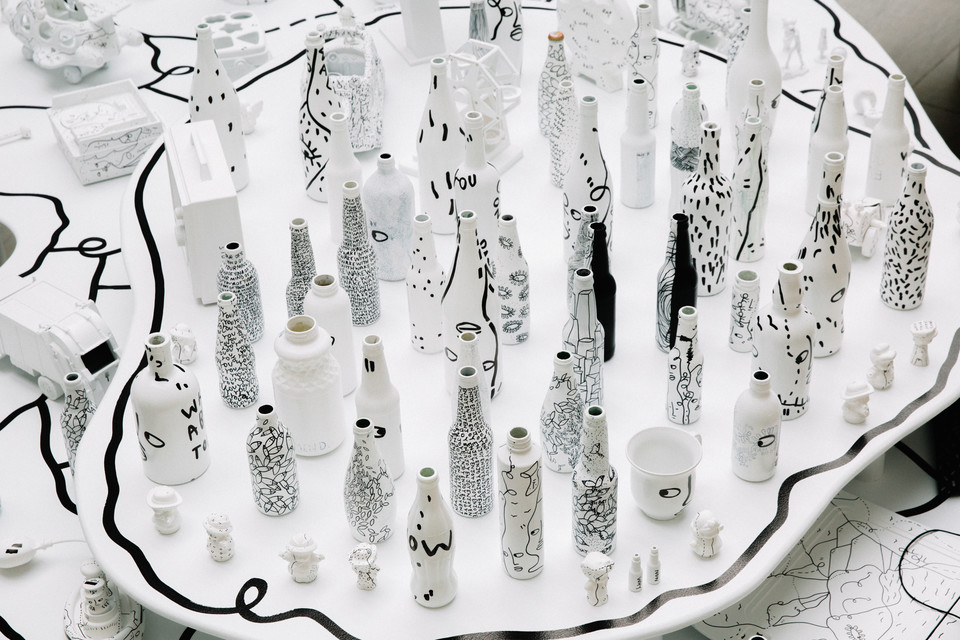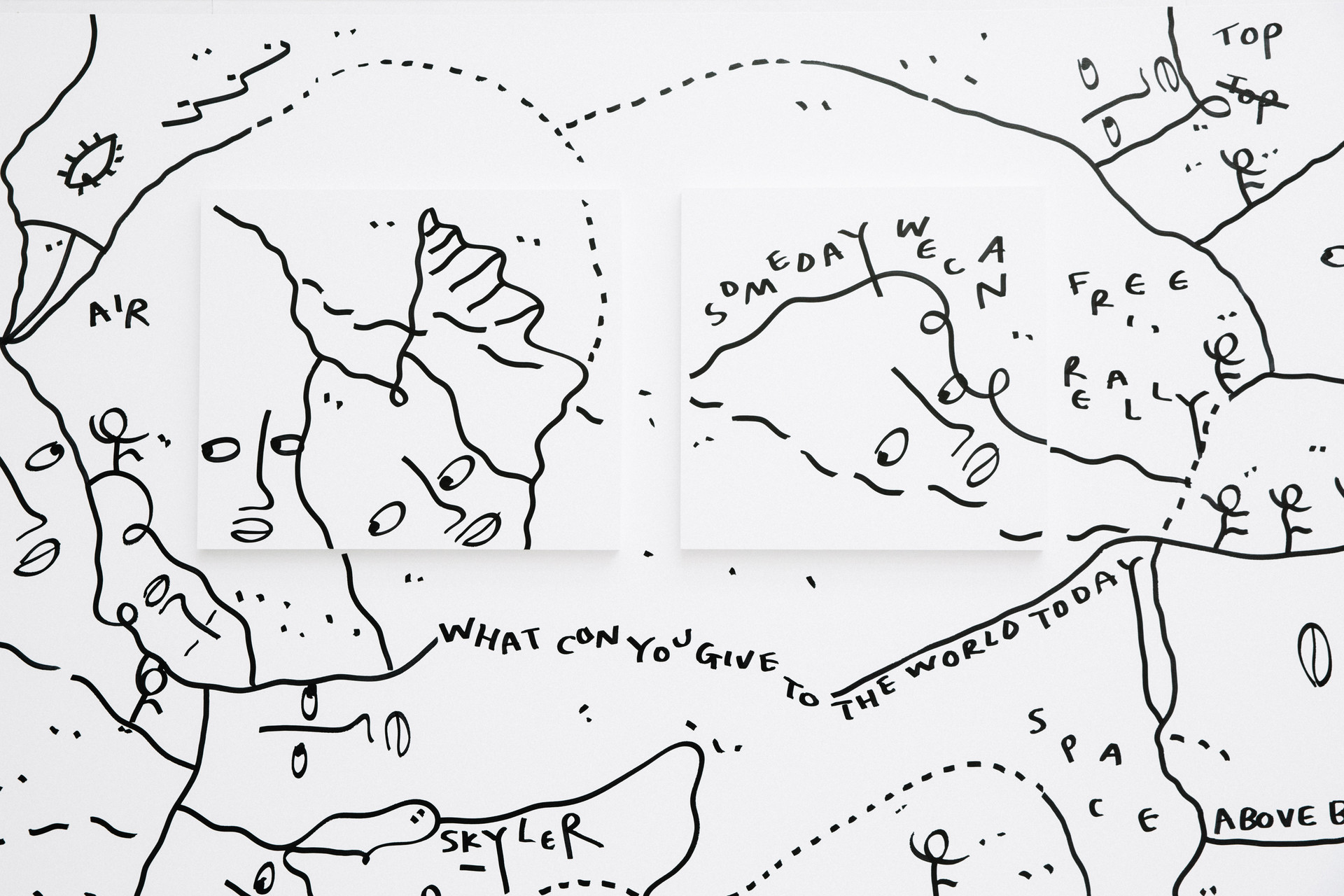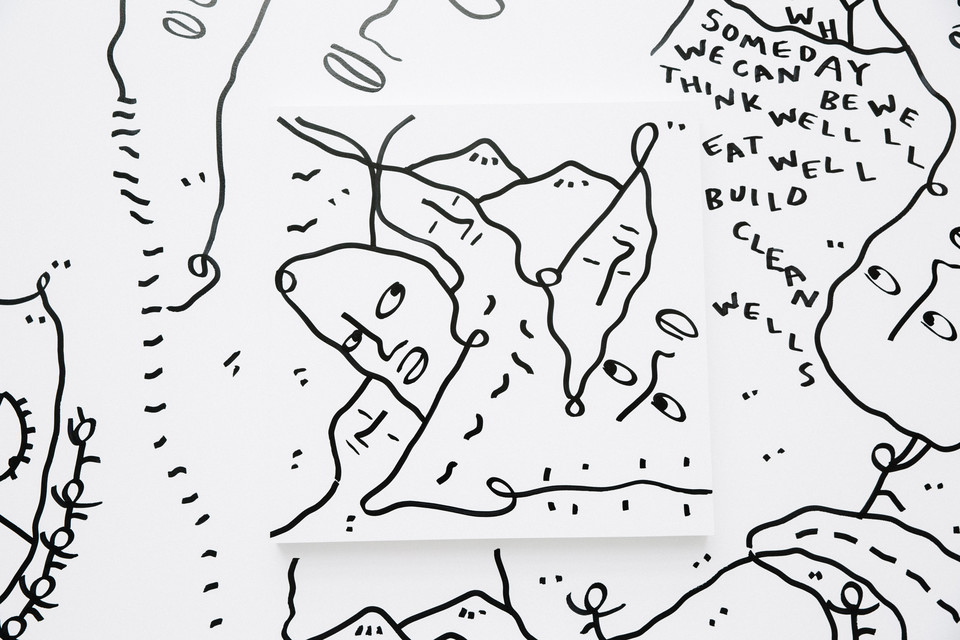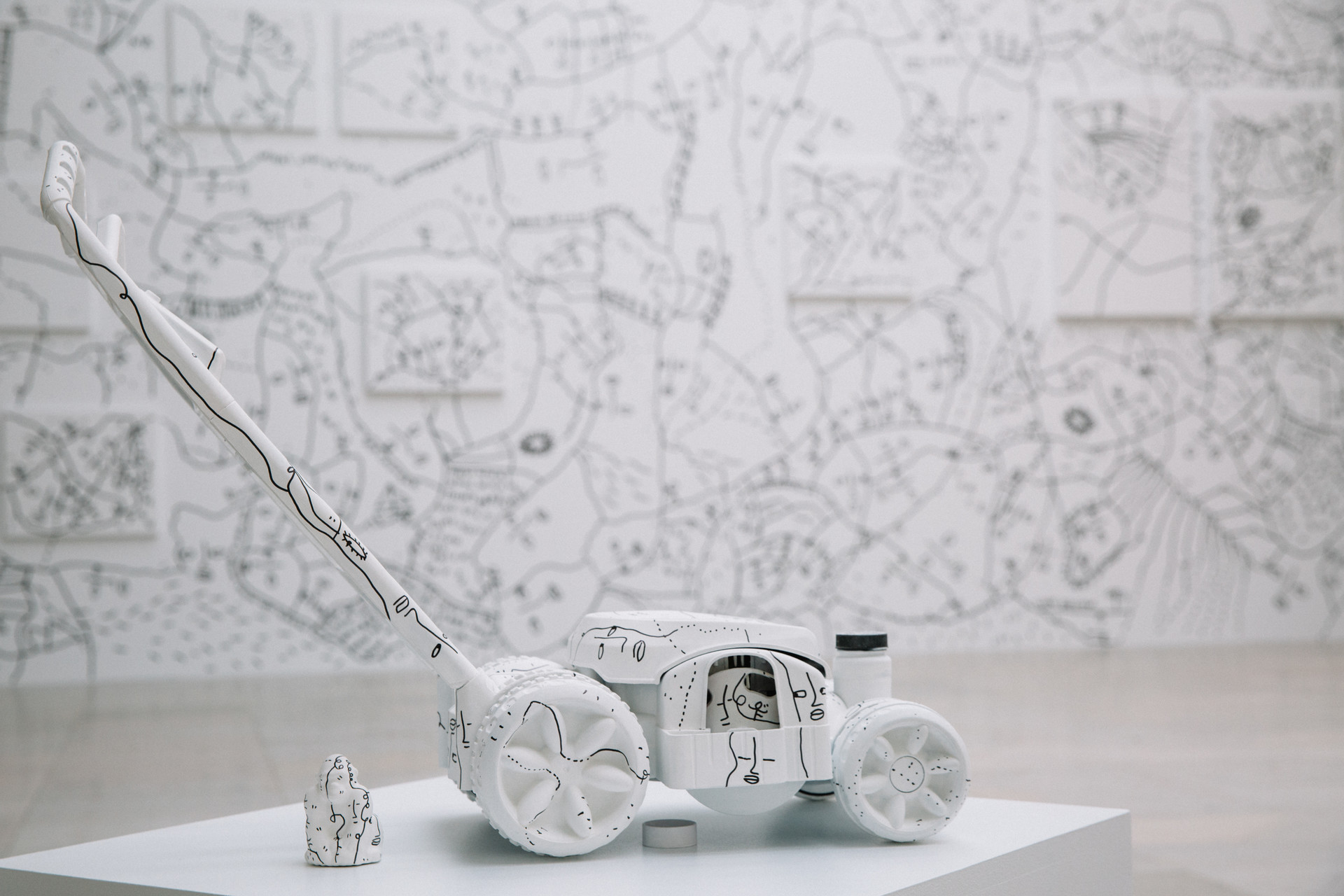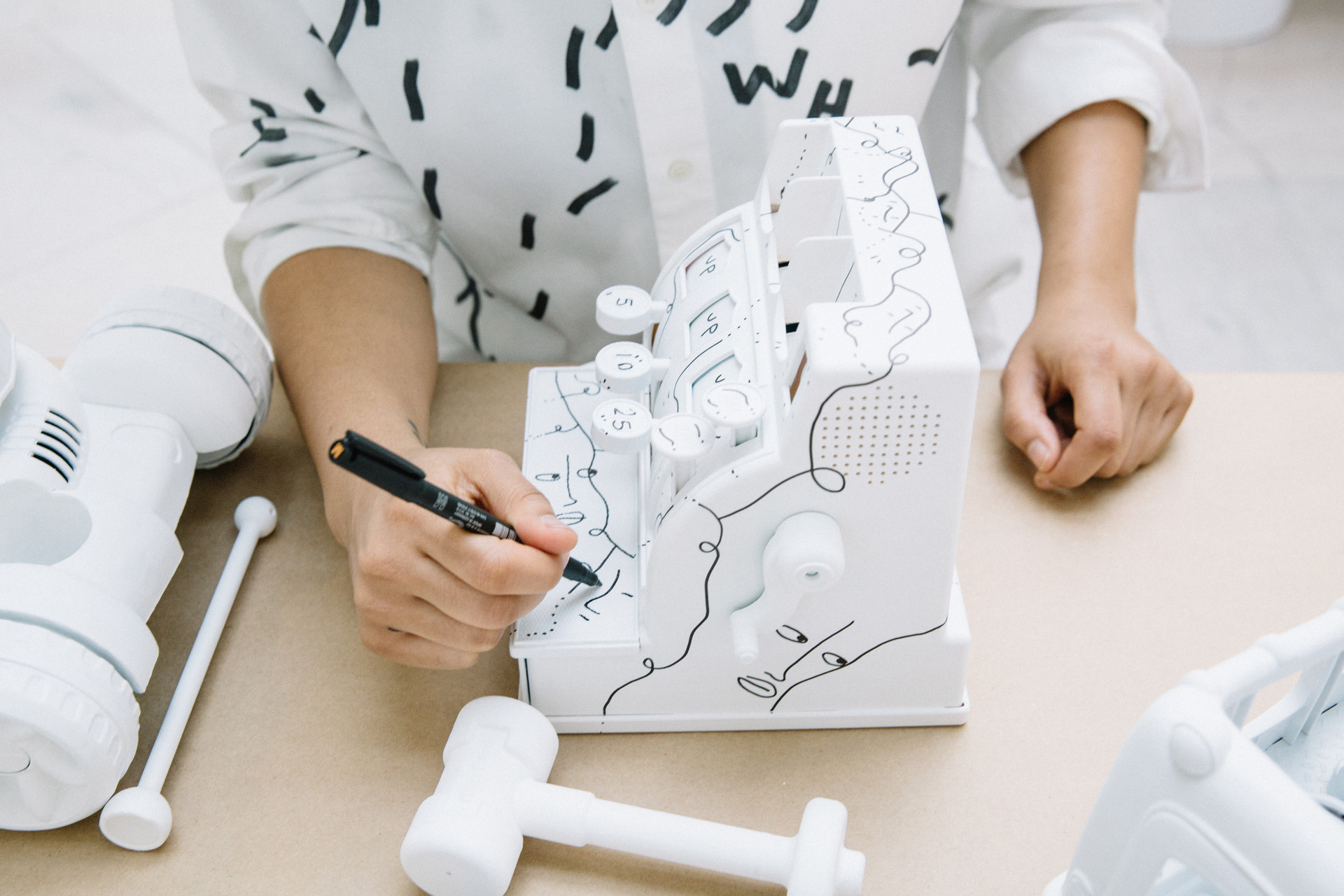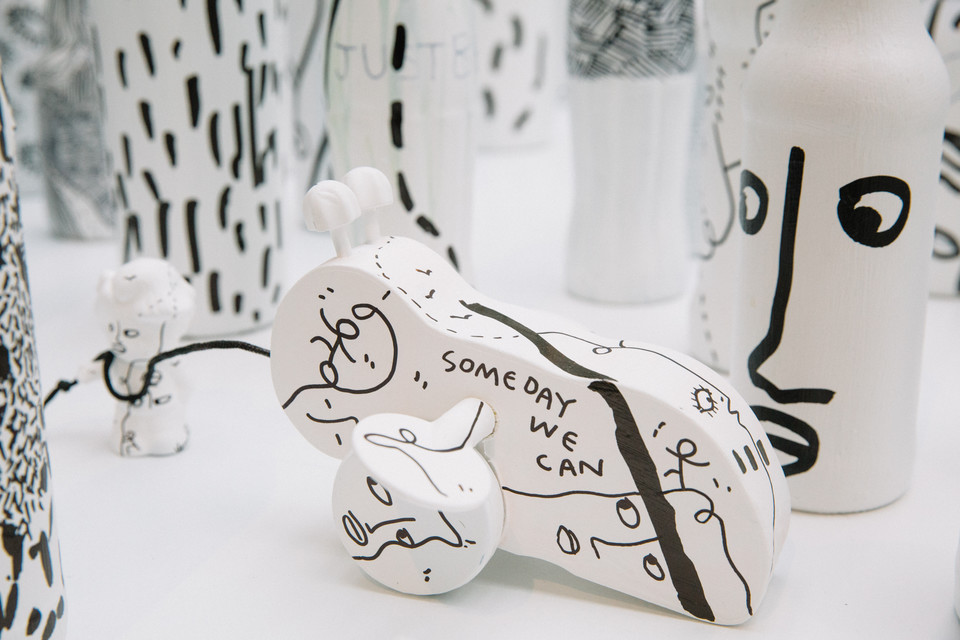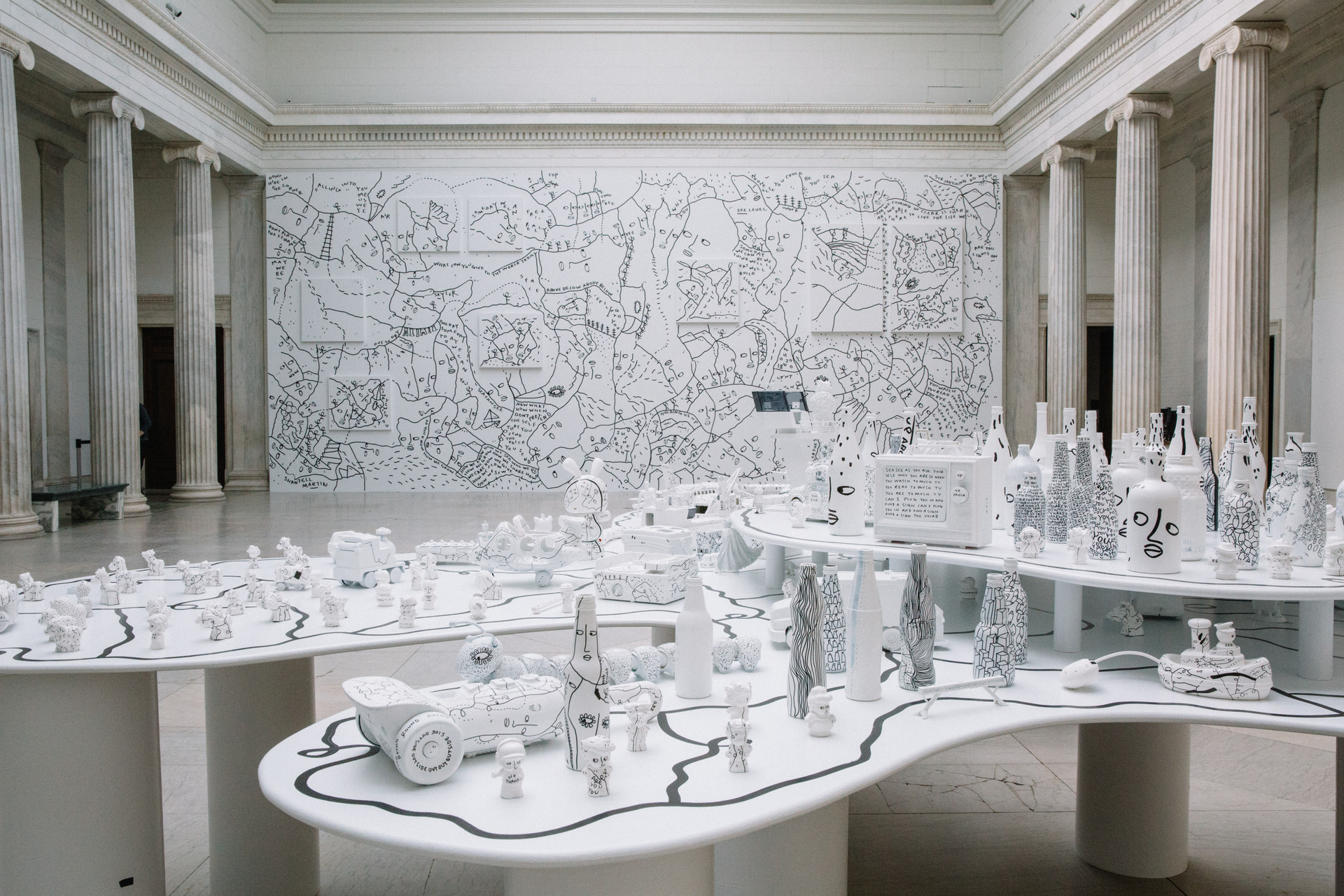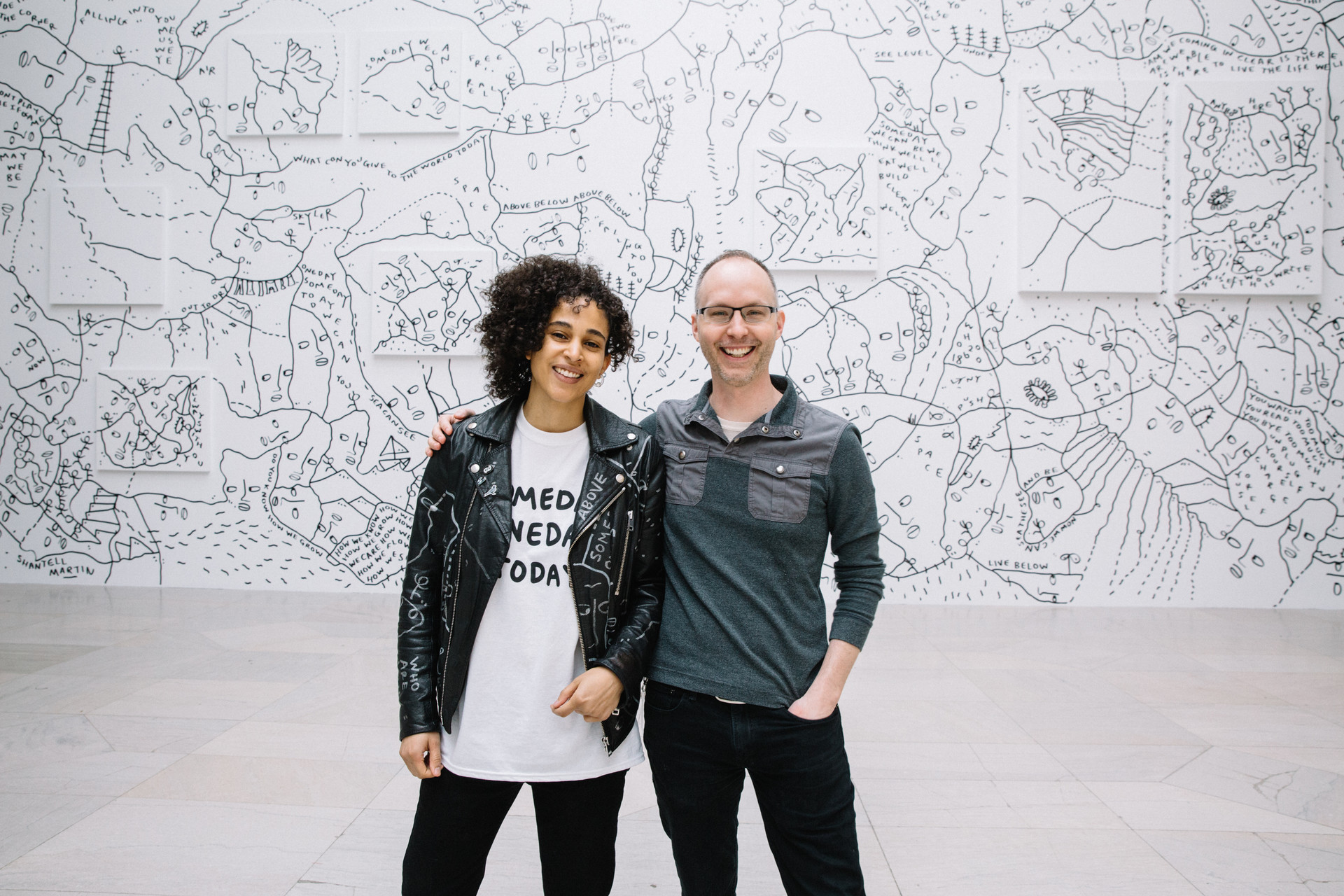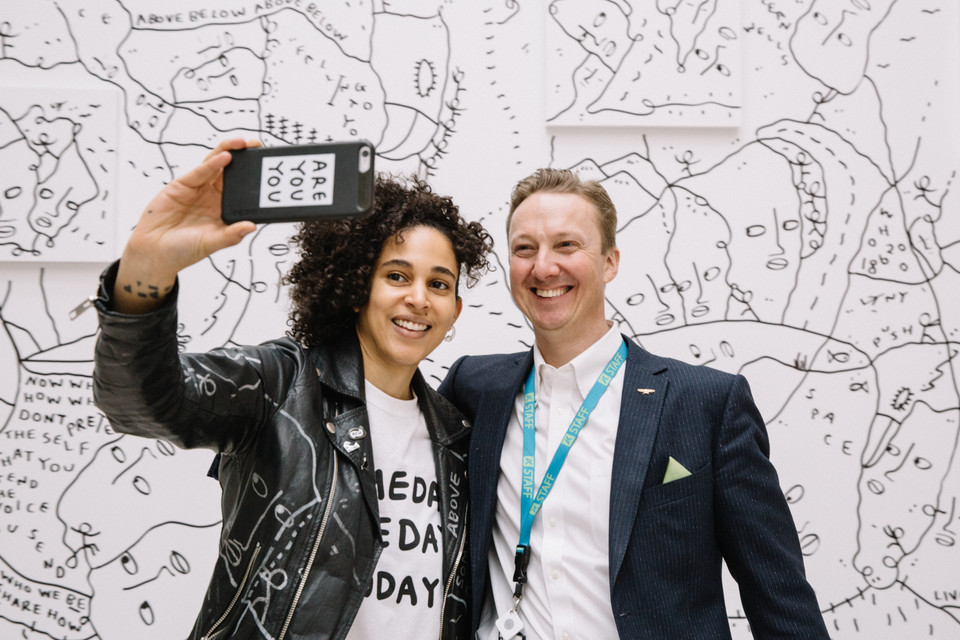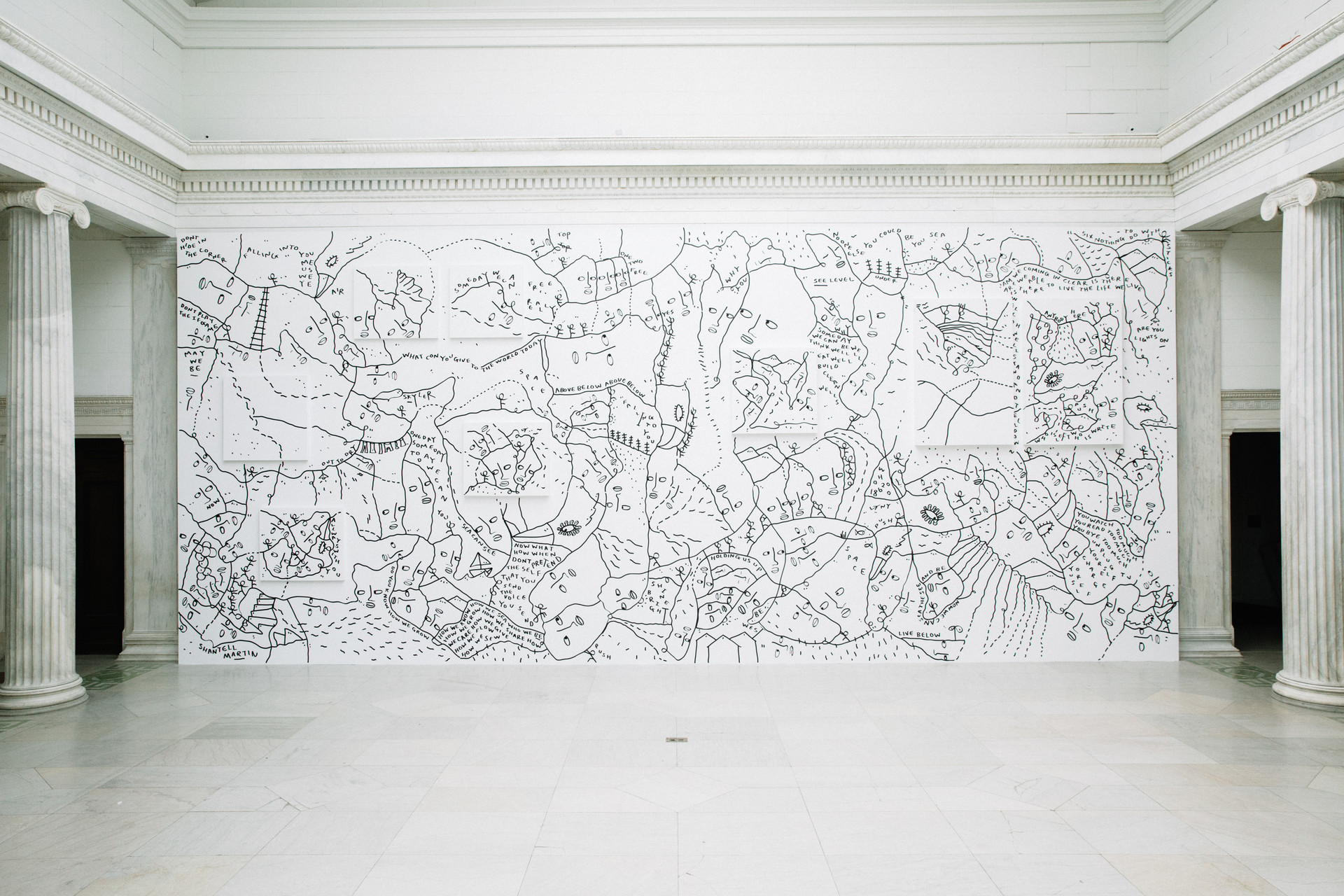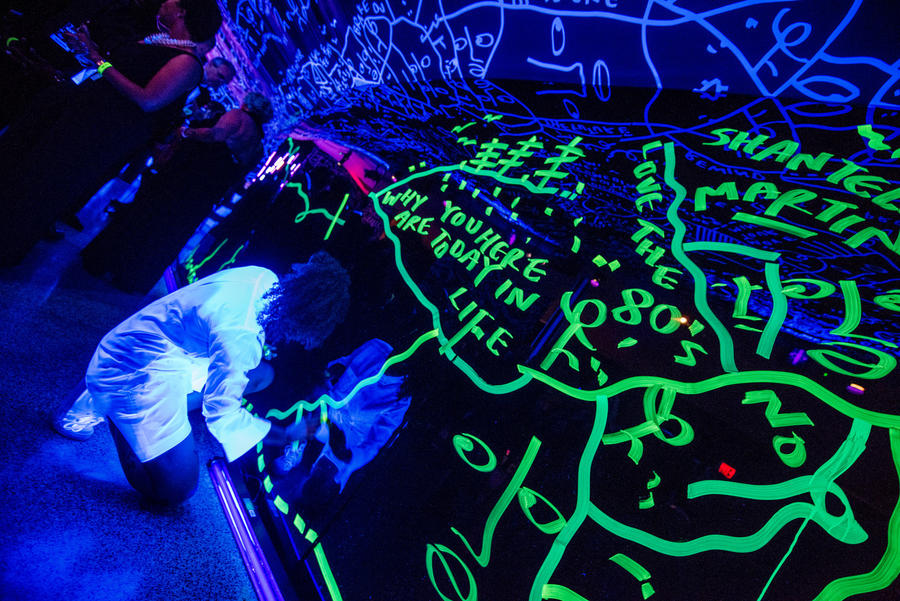Shantell Martin’s work goes beyond art, it’s an immersive journey into storytelling, identity, and space transformation. With a rich background in collaborations, commissions, institutional projects, and museum shows, Shantell has been on a journey of mastering her line and the art of creating pieces that not only capture attention but also provoke thought and emotion. Her distinctive style, rooted in self-exploration and social consciousness, offers more than a visual tapestry.
In 2025, Shantell was awarded an MBE (Member of the Order of the British Empire) for her contributions to British arts and charity. Her ability to see the bigger picture and address systemic challenges through her work uniquely equips her to tackle complex, meaningful projects. She is committed to pushing boundaries and creating a lasting impact.
Shantell Martin has collaborated with an inspiring array of corporate clients, cultural institutions, and world-renowned brands. Her work spans diverse industries, consistently breaking new ground through impactful, visually captivating projects.
Museum Shows/Installations
Whitney Museum, Denver Art Museum, New Britain Museum of American Art, Museum of Contemporary African Diasporan Arts, MoMA, Albright-Knox Art Museum, Brooklyn Museum.
Boards
British Ambassador’s Strategic Advisory Group, Governors Island Arts Advisory Board, Climate Museum Advisory Board, UAL Ambassador Board.
Institutions & Non-Profit Collaborations
92nd Street Y, Trust of Governors Island, New York City Ballet, Boston Ballet, Los Angeles Ballet, Art Production Fund, Keep a Child Alive, (RED), Public Art Fund, Nine Dot Arts, Global Citizen, AmFAR.
Brand Collaborations
Rimowa, Mattel/UNO, B&B Italia, Tiffany & Co., Flos, Kelly Wearstler, Vitra, The North Face, Jose Cuervo/1800, Max Mara, Kendrick Lamar, American Express, Martone Cycling Co., WME IMG/New York Fashion Week, Interview Magazine, Saks Fifth Avenue, Canada Goose, United Arrows & Sons, KCA Black Ball, Golden Vines Awards, United Airlines.
Commissions
Rockefeller Center, Times Square Alliance, Art Production Fund, Sotheby’s, Fotografiska, Google, Airbnb, Facebook, Young & Rubicam, Mother New York, Adobe, Phillips Auction House, Christie’s, W Hotel Union Square.
At the core of art lies a special bond - a genuine relationship between the artist and the collector.
If you're drawn to the idea of owning an original piece by Shantell Martin, we invite you to explore our Shop. For those interested in a more personalized touch through commissioning, please send us an email.
Credits
Branding & Design by Anton & Irene with love
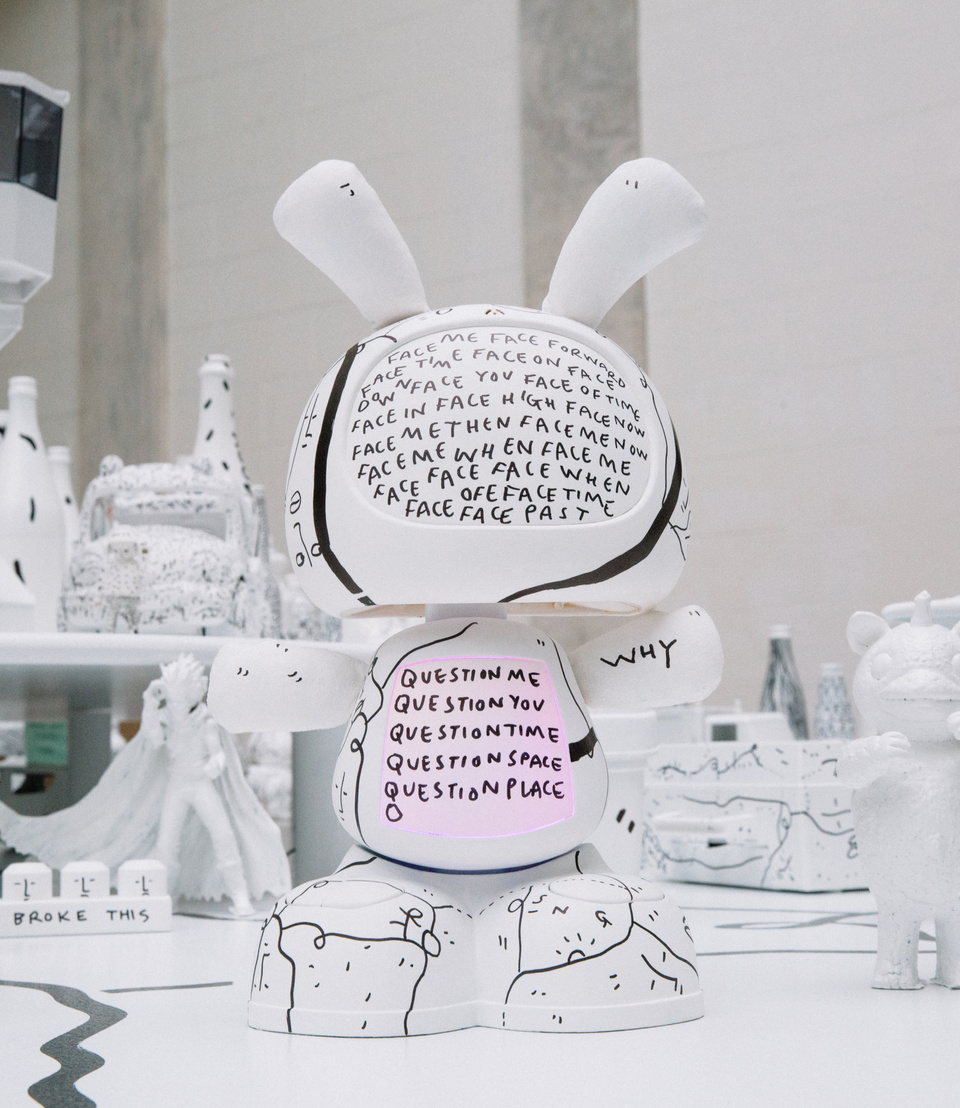
SOMEDAY WE CAN BUFFALO AKG ART MUSEUM
2017
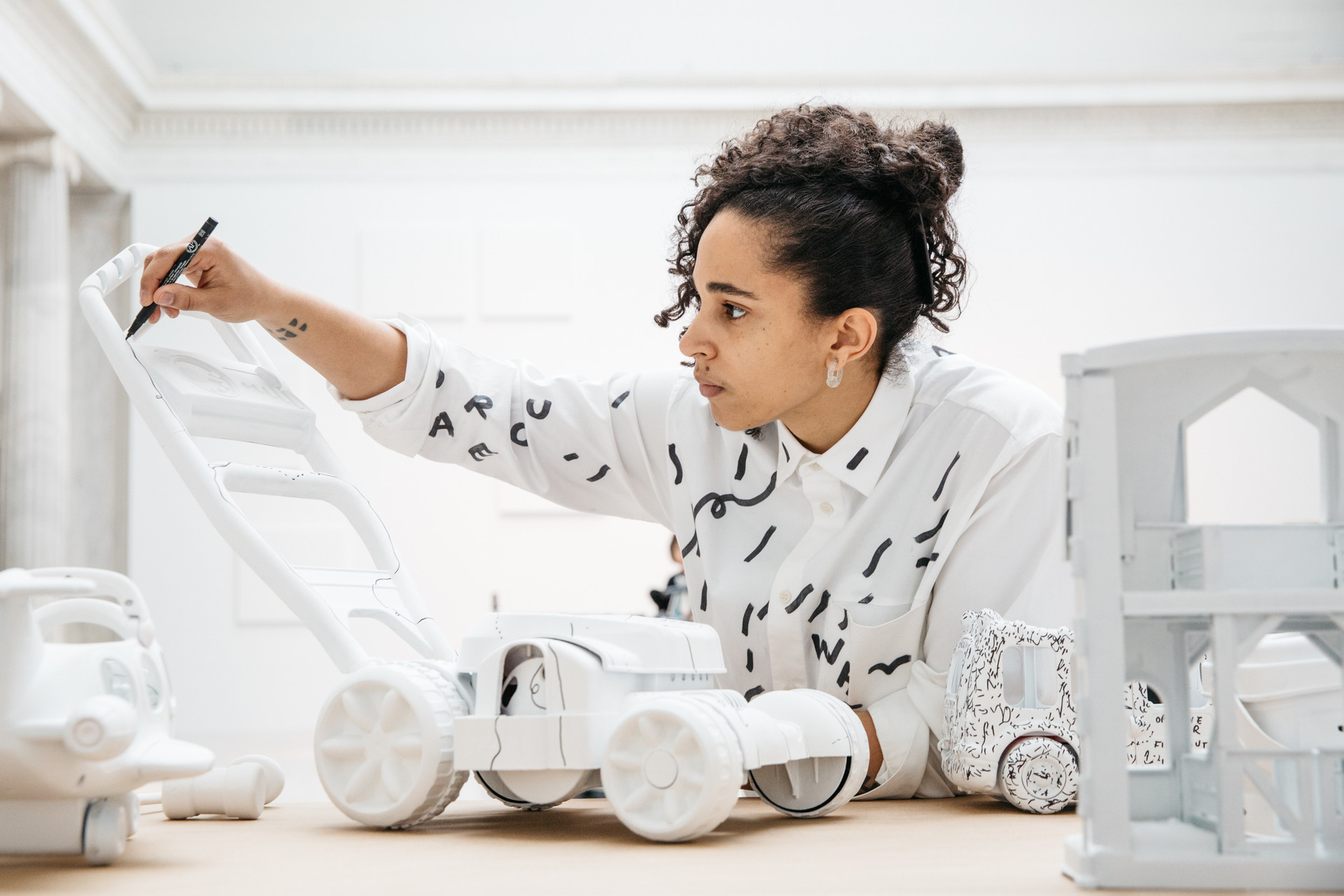
Using her simple trademark linework, black ink on white surfaces, Shantell Martin transforms everything from walls to found objects, ceramics, toys, sneakers, and even the faces and bodies of participants and passerbys into a signature visual narrative. This is the first time an artist working with the Buffalo AKG Art Museum's Public Art Initiative will install work simultaneously at the museum and in the community.
Supported by a grant from the University at Buffalo’s Creative Arts Initiative, the artist will work with the Public Art team, UB students, and East Side community representatives to identify the final location for a permanent mural. The core work from UB graduate students will result in an actionable matrix of locations throughout Buffalo’s East Side for future public art activities.
